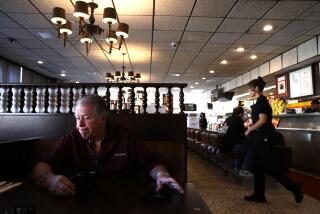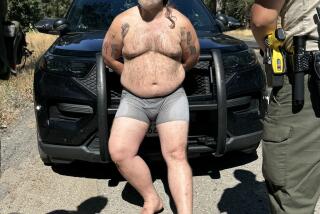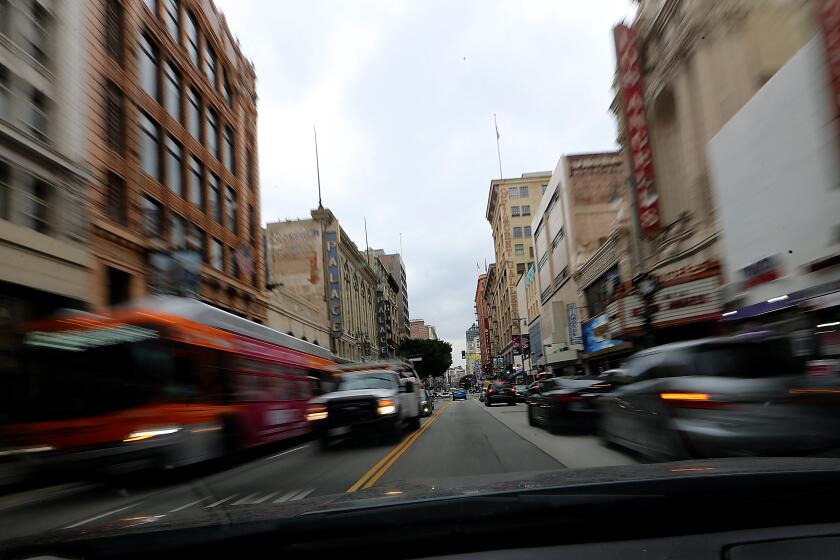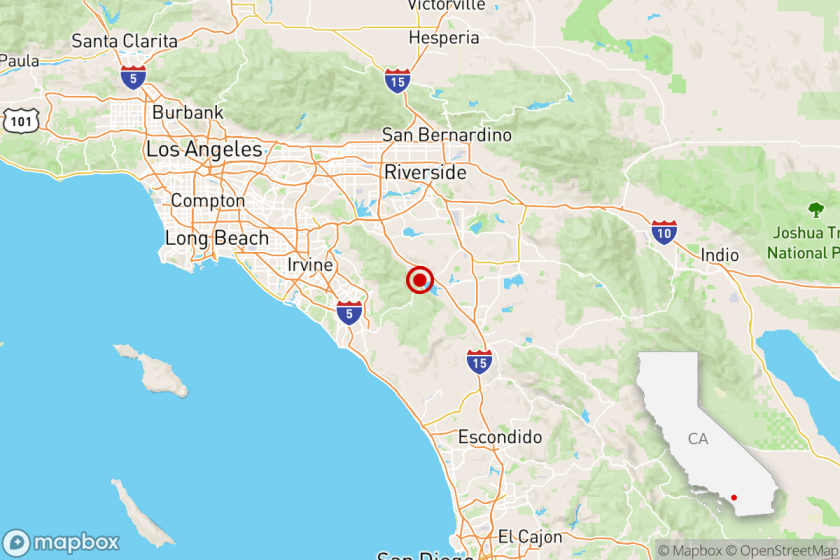Scientists Plan Blasts to Pinpoint Quake Risk : Seismology: Undersea bursts of air and underground explosions are to begin in the Southland next month. Scientists say they won’t harm wildlife or be noticed by people.
After a year’s delay to get permits, earthquake scientists plan to set off a series of underground explosions and undersea bursts of compressed air next month in an attempt to map potentially destructive hidden thrust faults underlying Southern California.
The experiments by the U.S. Geological Survey and the Southern California Earthquake Center are scheduled to start Oct. 12 with the research vessel R. V. Ewing, operated by the National Science Foundation, leaving Long Beach.
The explosions and bursts of air will be virtually undetectable by human beings and should have little effect on undersea creatures, scientists said Sunday.
Over a period of a week, the ship will use towed air guns to fire thousands of small bursts of compressed air that will be large enough to create sound waves detectable as far inland as the Mojave Desert.
The waves will be analyzed by a network of 200 onshore seismographs arranged along three lines--Seal Beach to Barstow, Topanga Canyon through the Northridge earthquake epicenter to Mojave, and Redondo Beach to San Bernardino--to form an image of the rocks and faults six to 20 miles beneath the surface, where the most damaging earthquakes occur.
A series of 60 ammonium nitrate explosions will be set off beginning Oct. 24 as much as 140 feet below the ground between Seal Beach and Barstow. Four hundred seismographs will be installed specifically to record the effects of those explosions.
“Our goal is also to be able to predict where in the Los Angeles Basin shaking may be exaggerated during future earthquakes,” said Gary Fuis, the Geological Survey scientist in charge of the experiments, from his home in the San Francisco Bay Area.
Tom Henyea, executive director of the Southern California Earthquake Center, said he and his colleagues are confident that air-gun bursts fired undersea off Santa Catalina Island will be detectable by instruments all over the region.
Fuis said it would take approximately three years to use the data from the experiments to develop subsurface maps showing the location of faults and the thickness of sedimentary rocks. The data also will allow scientists to compare how fast sound waves move through rocks and to identify areas where different rock types interface and could be expected to focus seismic energy toward particular areas.
Such mapping in the Bay Area has demonstrated why the 1989 magnitude 7.1 Loma Prieta earthquake focused part of its energy 70 miles to the north, causing substantial damage in the Marina district of San Francisco, Fuis said.
The $600,000 cost of the experiments will be defrayed by the National Science Foundation and the Geological Survey’s National Earthquake Hazards Reduction Program.
Most of the blasts, which will use between 50 and 4,000 pounds of ammonium nitrate, will take place on publicly owned property.
Jim Mori, scientist-in-charge at the Geological Survey’s Pasadena Field Office, has estimated that the largest blasts, to be set off only in rural areas, will feel similar to a magnitude 2.5 earthquake, which often passes unnoticed.
Even so, concern from the public as well as government officials about the experiments after they were announced last summer forced scientists to spend a year seeking permits from various agencies before proceeding.
Only sea life in the immediate vicinity of the blasts will be injured by the bursts of air, Fuis and Henyea said.
“Oil companies use these all the time in prospecting for oil,” Fuis said. “Perhaps within a meter of an air gun, fish might be killed. At longer distances, there will be no harm to fish, larvae or eggs, and we expect whales to avoid us altogether. So this will have an insignificant effect on the environment.”
Henyea noted that dynamite, which is more lethal to fish, will not be used.
A controversy earlier this year forced the delay of a different type of underwater experiment. The Scripps Institution of Oceanography had planned to study global warming by repeatedly transmitting a loud, low-frequency noise across the Pacific Ocean from loudspeakers off the Big Sur coast and the island of Kauai.
After some scientists said the noise could drive sea animals from their habitats and make it hard for some species to locate each other and reproduce, Scripps agreed to study the matter further before deciding whether to go ahead.
More to Read
Sign up for Essential California
The most important California stories and recommendations in your inbox every morning.
You may occasionally receive promotional content from the Los Angeles Times.






